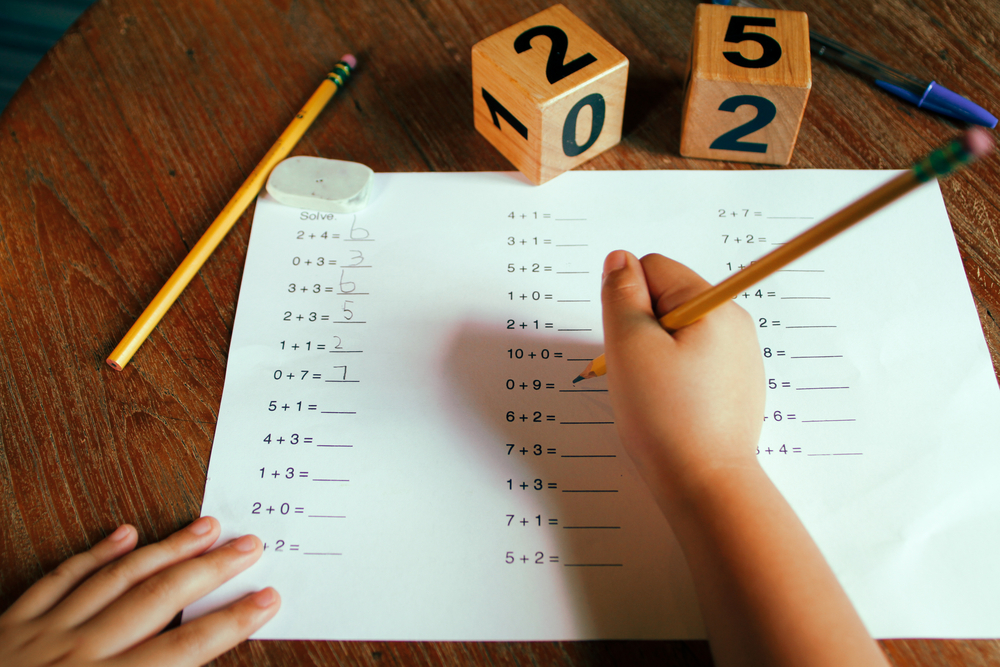Time recognition Math Worksheets for Ages 4-8
6 filtered results
-
From - To
Discover our engaging Time Recognition Math Worksheets designed specifically for children ages 4-8! These fun, interactive activities help young learners master the concept of time, from reading clocks to understanding daily schedules. Our worksheets encourage critical thinking, boost math skills, and foster a love for learning. With vibrant illustrations and age-appropriate challenges, your child will effortlessly develop important time-telling skills while enjoying the process. Ideal for homeschoolers or classroom use, these printable resources make learning about time enjoyable and effective. Help your child build a strong foundation in math with our comprehensive and entertaining Time Recognition Math Worksheets!
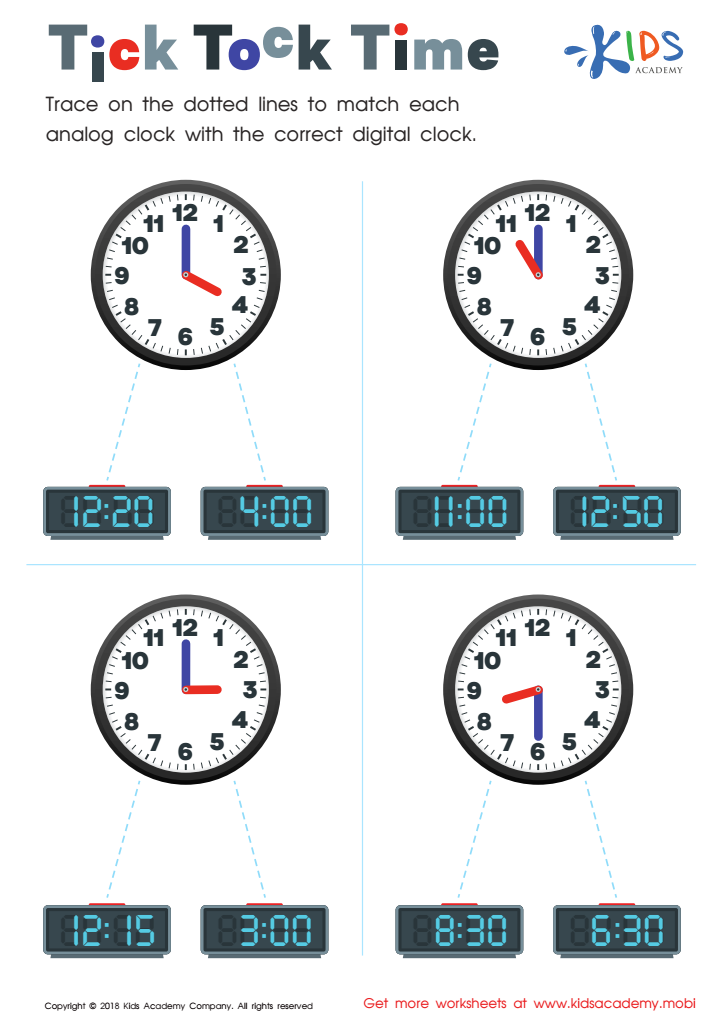

Tick Tock Time Worksheet
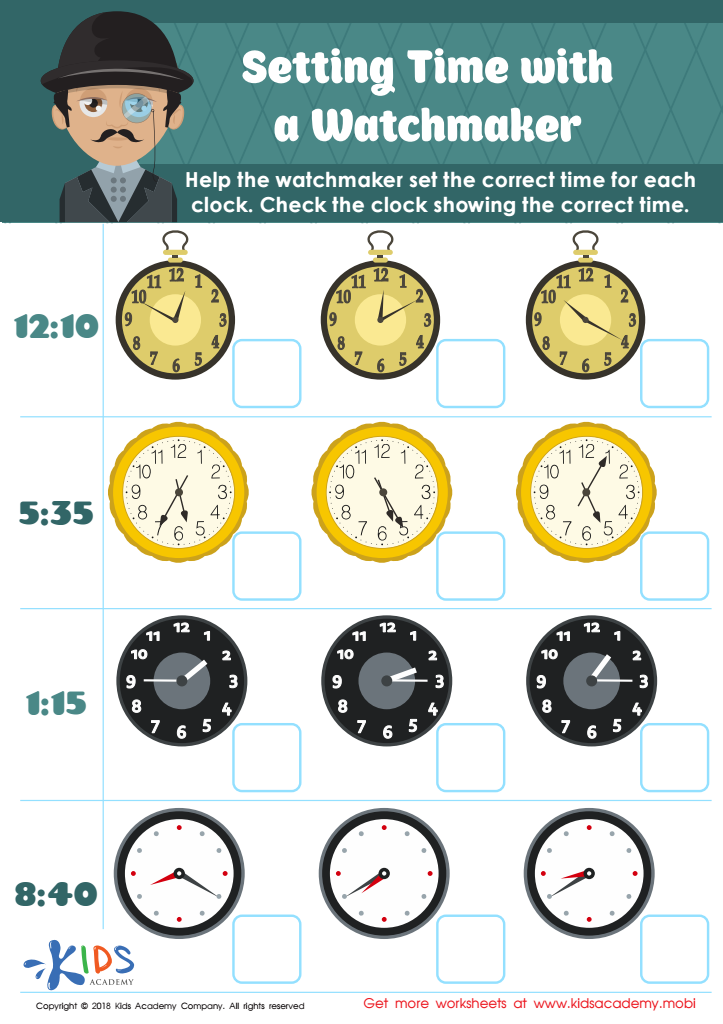

Setting Time with Watchmaker Worksheet
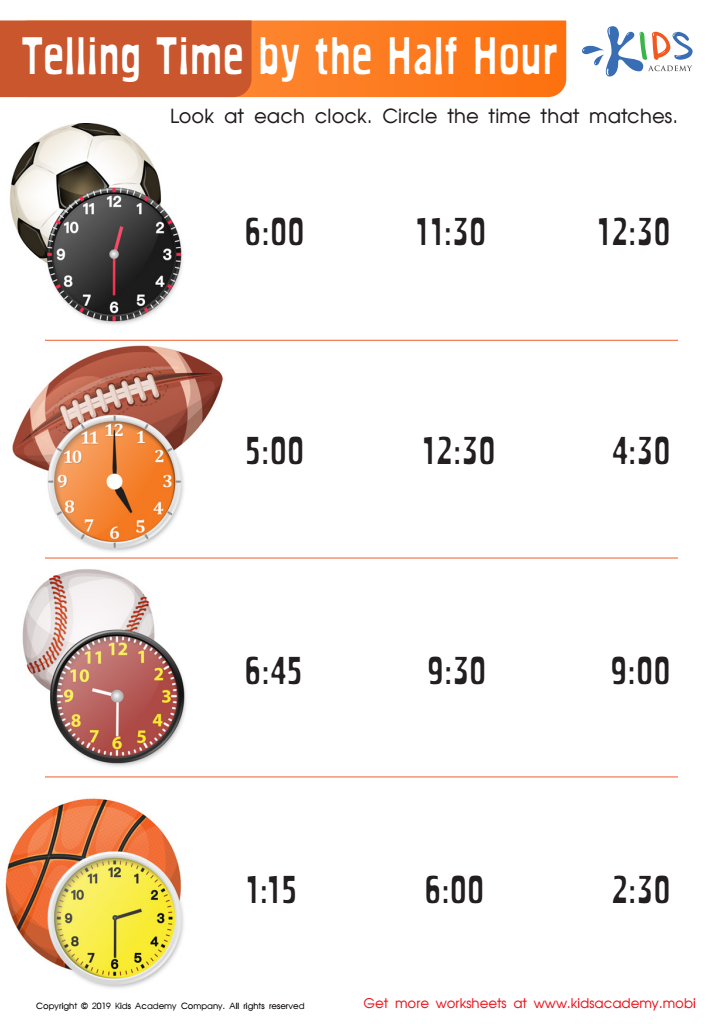

Telling Time by the Half Hour Worksheet
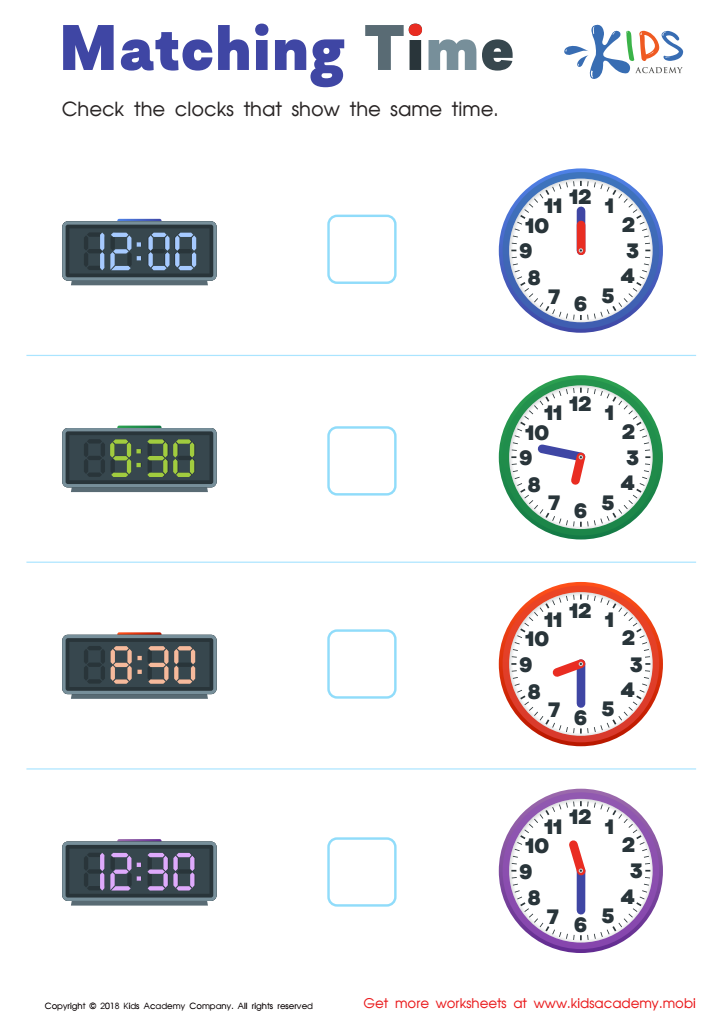

Matching Time Worksheet
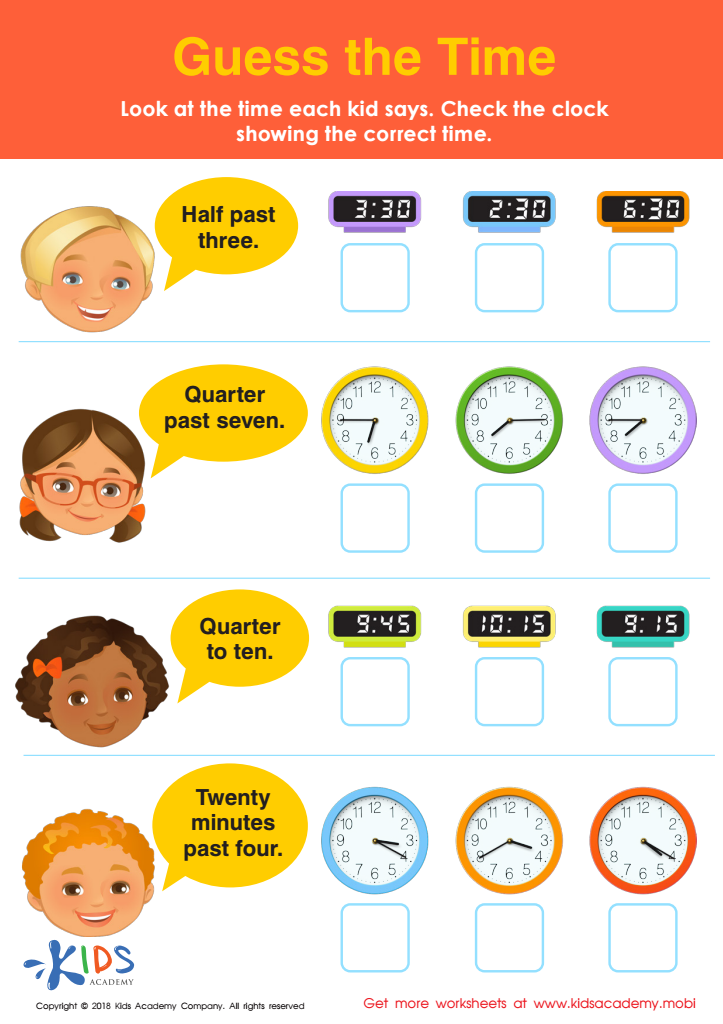

Guess the Time Worksheet
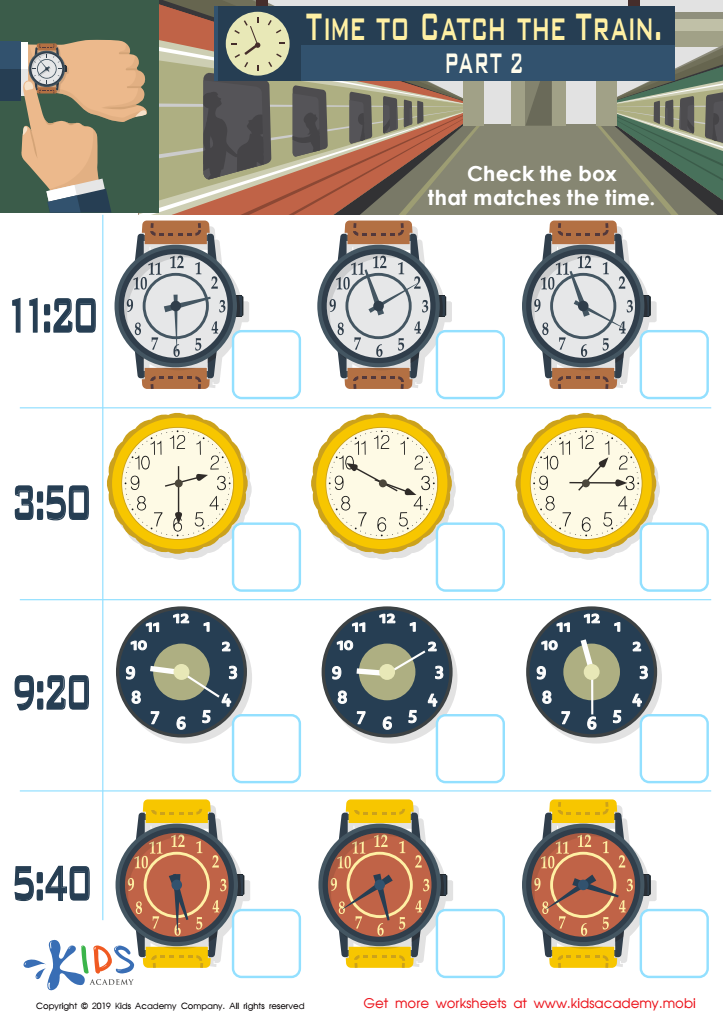

Time to Catch the Train Part 2 Worksheet
Time recognition is a fundamental math skill that plays a crucial role in the developmental journey of children aged 4-8. Understanding time equips children with the ability to structure their daily lives, manage responsibilities, and develop a sense of independence. For parents and teachers, fostering time recognition at this early age has significant implications for a child's overall learning and development.
Firstly, learning about time enhances cognitive growth. It promotes the understanding of concepts such as sequencing, measurement, and critical thinking, all of which are foundational for various mathematical skills. Additionally, it helps children grasp abstract concepts, like the relation between past, present, and future.
Secondly, mastering time recognition encourages self-regulation and responsibility. As children learn to read clocks and manage their schedules, they become more aware of their activities and commitments, fostering independence.
Moreover, incorporating time into daily routines promotes practical learning opportunities. Engaging children in discussions about time, using calendars, and involving them in planning activities can strengthen their application of math skills in real life.
Ultimately, emphasizing time recognition not only enhances mathematical understanding but also prepares children for everyday situations, making it an essential focus for parents and educators alike.
 Assign to My Students
Assign to My Students





